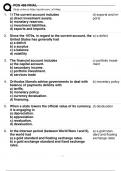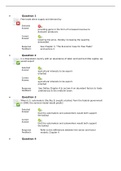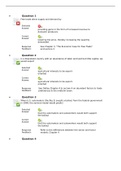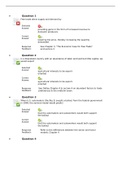POS 486 (POS 486)
Arizona State University
All 15 results
Sort by
Providing enough questions to use as revision material for the final POS 486 final exam
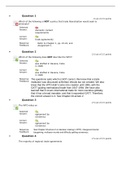
-
POS 486 - POS 486 MIDTERM EXAM. QUESTIONS AND ANSWERS. COMPLETE SOLUTIONS. A+ GRADED.
- Exam (elaborations) • 14 pages • 2021
-
 registered_nurse
registered_nurse
-
- $13.49
- + learn more
POS 486 - POS 486 MIDTERM EXAM. QUESTIONS AND ANSWERS. COMPLETE SOLUTIONS. A+ GRADED. Question 1 0 out of 2.5 points Which of the following is NOT a policy that trade liberalization would seek to eliminate? Selected Answer: 4. domestic content requirements Correct Answer: 2. trade agreements Response Feedback: Refer to Chapter 1, pp. 22-24, and Assignment 1 Question 2 2.5 out of 2.5 points Which of the following does NOT describe the WTO? Selected Answer: 2. was dra...
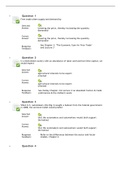
-
POS 486 FINAL EXAM - Questions, Answers and Response Feedback
- Exam (elaborations) • 15 pages • 2021
-
 Jumuja
Jumuja
-
- $20.49
- + learn more
POS 486 FINAL EXAM - Questions, Answers and Response Feedback Question 1 Free trade alters supply and demand by Question 2 In a liberalized country with an abundance of labor and land but little capit al, we would expect Question 3 When U.S. automakers (the Big 3) sought a bailout from the federal government in 2008, the sectoral model would predict Question 4 In a factor-based model of trade, if a developing country begins producing more shoes and fewer aviation systems, who benefits? Question ...
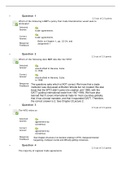
-
POS 486 MIDTERM EXAM - Questions, Answers and Response Feedback
- Exam (elaborations) • 14 pages • 2021
-
 Jumuja
Jumuja
-
- $16.49
- + learn more
POS 486 MIDTERM Which of the following is NOT a policy that trade liberalization would seek to eliminate? Which of the following does NOT describe the WTO? The WTO relies on The majority of regional t rade agreements The enforcement problem of trade agreements refers to the fact that If more trade is created than diverted, a regional trade agreement (RTA) The difference between a FTA and a Customs Union Consumption Indifference Curves In an autarkic country, the `production possibility frontier...
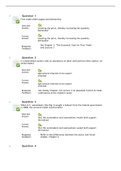
-
POS 486 FINAL EXAM - Questions, Answers and Response Feedback
- Exam (elaborations) • 15 pages • 2021
-
 Bri254
Bri254
-
- $18.49
- + learn more
POS 486 FINAL EXAM - Questions, Answers and Response Feedback Question 1 Free trade alters supply and demand by Question 2 In a liberalized country with an abundance of labor and land but little capital, we would expect Question 3 When U.S. automakers (the Big 3) sought a bailout from the federal government in 2008, the sectoral model would predict Question 4 In a factor-based model of trade, if a developing country begins producing more shoes and fewer aviation systems, who benefits? Question 5...
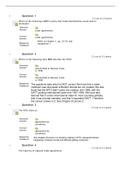
-
POS 486 MIDTERM EXAM - Questions, Answers and Response Feedback
- Exam (elaborations) • 14 pages • 2021
-
 Bri254
Bri254
-
- $15.49
- + learn more
POS 486 MIDTERM Which of the following is NOT a policy that trade liberalization would seek to eliminate? Which of the following does NOT describe the WTO? The WTO relies on The majority of regional trade agreements The enforcement problem of trade agreements refers to the fact that If more trade is created than diverted, a regional trade agreement (RTA) The difference between a FTA and a Customs Union Consumption Indifference Curves In an autarkic country, the `production possibility frontier'...
Exam of 15 pages for the course POS 486 at Arizona State University (Finals POS)
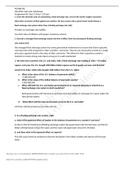
-
Fall 2018: Instructor Schatzman Assignment 2
- Exam (elaborations) • 2 pages • 2021
-
 Kingamor
Kingamor
-
- $8.49
- + learn more
1. Given the domestic costs of maintaining a fixed exchange rate, most of the world's largest economies allow their currencies to float against one another. List two reasons why a government would choose a fixed exchange rate system rather than a floating exchange rate (1pt) Provides an exchange rate stability Can limit rates of inflation with proper monetary controls

How did he do that? By selling his study resources on Stuvia. Try it yourself! Discover all about earning on Stuvia

